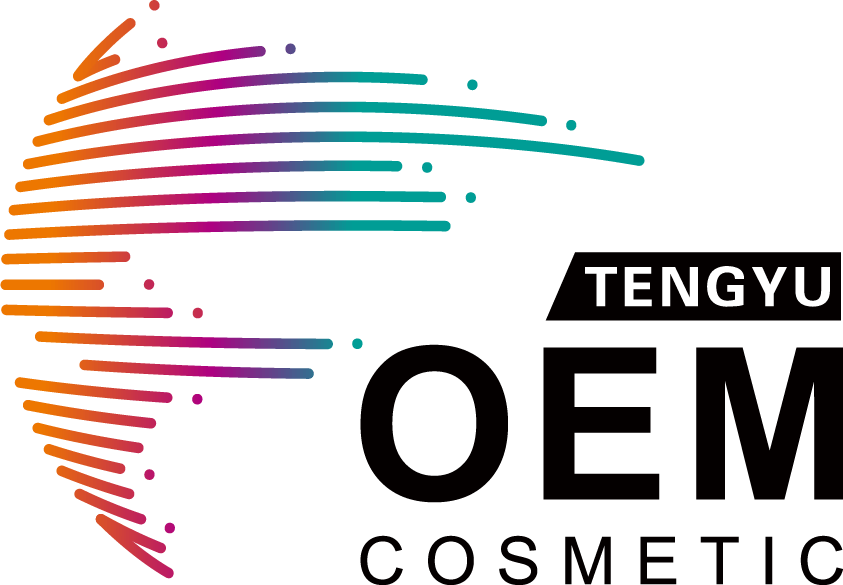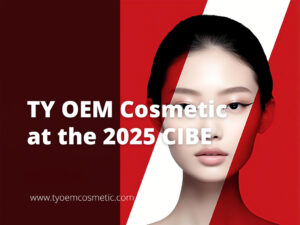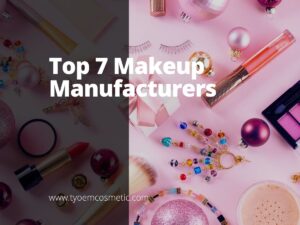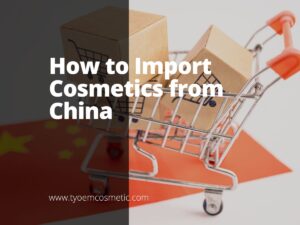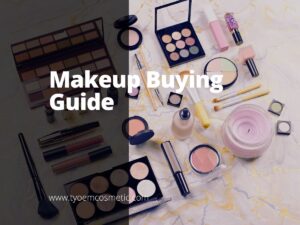Walking through that first factory, I felt excited then nervous.
The facility looked okay. But something fell off.
No clear process. No documentation. Just vague answers.
I left without signing anything. And I’m glad I did.
Since then, I’ve worked with dozens of makeup manufacturers. Some were great. Others? Not so much.
In this article, I’ll help you skip the guesswork.
You’ll get a step-by-step guide to find a manufacturer that fits your brand. One that makes high-quality products you’re proud to sell.
By the end, you’ll know what to look for and how to make a smart, confident choice.
So let’s begin!
Step #1: Define Your Product Goals
Before you start reaching out to makeup manufacturers, you need to build a clear foundation. Without it, you’ll waste time explaining your brand or worse, you’ll end up with products that don’t match your vision.
I learned this the hard way. In my first few attempts, I contacted factories without a clear direction. Most didn’t respond. The few who did sent generic offers that didn’t fit what I wanted. Once I took time to define my goals, things changed. I started getting better replies and better matches.
Here’s how to start the right way:
Write Down Your Brand Identity
Create a short description of your brand.
Include:
- Whether you’re launching a new makeup line or expanding from skincare/salon services
- The tone or style of your brand (minimal, glam, natural, etc.)
- Your business type—start-up, salon, or full brand
This helps you filter manufacturers who work with brands like yours.
Identify Who You’re Making Products For
Make a quick customer profile. Ask:
- How old are they?
- What skin type and tone do they have?
- What’s their lifestyle? (Busy moms, young professionals, beauty creators?)
Manufacturers often ask for this info to help with product development. Having it ready makes communication smoother.
List the Products You Want to Make
Don’t guess write a clear list.
For example:
- 3 liquid foundations
- 2 matte lipsticks
- 1 multi-use cream blush
You don’t need full details yet, just a starting point. This will help manufacturers tell you what they can or can’t do.
Choose 2–3 Key Product Features
Make a short list of your must-haves. These could be:
- Vegan
- Organic
- Fragrance-free
- Long-wear
These features will help you filter manufacturers by specialty.
Set Your Budget and Launch Date
You don’t need exact numbers but give a range. For example:
- Budget: $5,000–$10,000
- Launch date: October 2025
This helps manufacturers check if your timeline and order size are realistic for them.
Create a Brief or Mood Board
Put everything above into a simple product brief (1–2 pages) or a visual mood board.
You can include:
- Product descriptions
- Sample packaging ideas
- Shade inspiration
- Brand colors or slogans
This gives manufacturers a quick overview of what you want—and shows that you’re serious.
By following these steps, you’ll be ready to talk to manufacturers confidently. You’ll save time, avoid confusion, and attract partners who fit your vision.
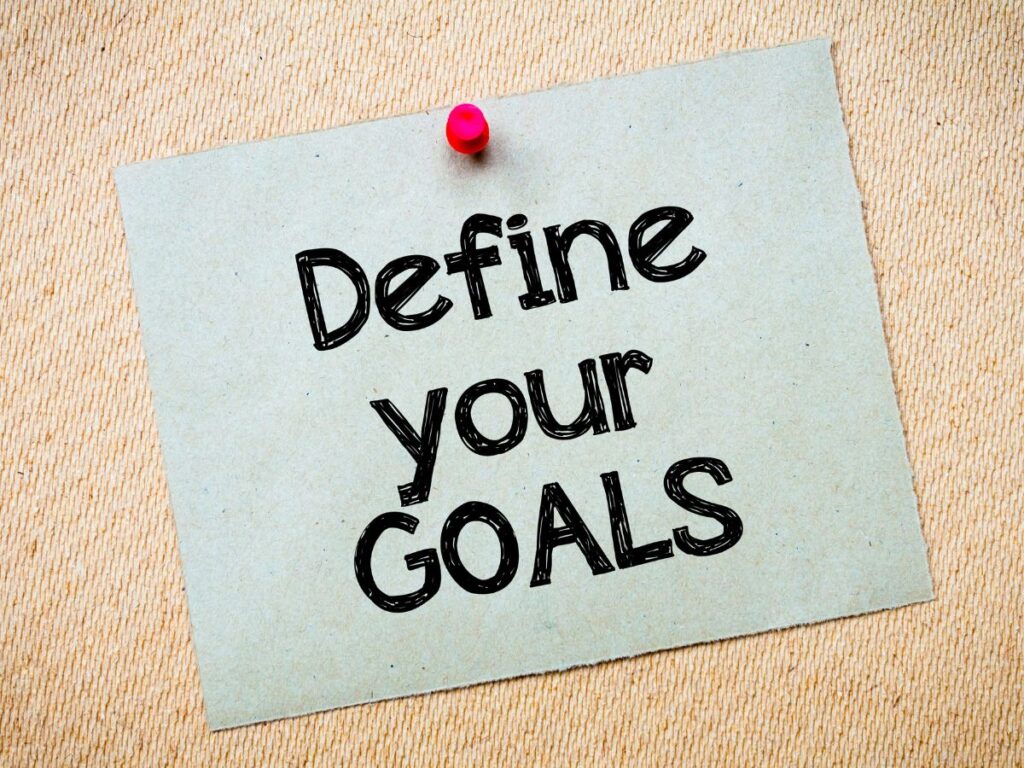
Step #2: Choose Between Private Label and Custom Formulation
When I first started looking for makeup manufacturers, I didn’t know there were two main options. One factory sent me a price list of pre-made products. Another asked me for an ingredient list and lab samples. I was confused.
Turns out, they were offering two different paths private label and custom formulation. Each one works. But which one fits your brand?
Let’s break it down.
What’s the Difference?
Private Label means using ready-made products from a manufacturer and adding your brand name.
You choose from existing formulas foundation, lipsticks, shadows and customize basic things like:
- Logo and label
- Packaging style
- Shade selection (from what’s available)
Pros:
- Faster to launch (often within 6–8 weeks)
- Lower minimum order quantities (MOQs), sometimes as low as 100–500 units
- Great if you need products fast or want to test the market
Cons:
- Limited control over texture, scent, and ingredients
- You can’t tweak formulas much
- Another brand might be selling a similar version
Custom Formulation (also called OEM/ODM) means you work with a manufacturer to create a product from scratch. You choose all ingredients, shades, texture, finish, and more.
Pros:
- Full control over product quality and feel
- Unique formulas that match your exact brand vision
- Good fit for brands with strong values (like clean beauty or sensitive-skin formulas)
Cons:
- Takes longer, up to 3-6 months or more
- Higher MOQs and development costs
- You’ll need more back-and-forth with the lab
When I worked with a skincare brand expanding into makeup, they wanted fragrance-free formulas for sensitive skin. That ruled out private label. We had to go customs to meet their goals.
How to Decide
Here’s a quick way to figure out what’s best for you:
- Salons/Spas: Private label is often the best place to start. It’s faster and simpler.
- Established Skincare Brands: Custom lets you match your existing brand story and ingredient choices.
- Start-Ups: Think about what matters most speed to market or having a one-of-a-kind product?
Still not sure?
Try this:
Make 2 lists your must-haves and your nice-to-haves. If your must-haves include custom texture, ingredients, or finish, custom might be your path. But if you just want a solid product with your branding, private label gets you there quicker.
At TY Cosmetics, both options are available. Whether you’re looking for a quick launch with ready-to-go formulas or want a lab partner to help develop something from scratch, they can walk you through every step without the overwhelm.
Choosing the right path now saves you time later and gets you closer to a manufacturer who truly fits your needs.
Step #3: Start Your Search
Once you know what you want and which type of manufacturing you need, it’s time to start your search. This part can feel overwhelming at first. I remember opening 20 tabs and getting lost in websites that all looked the same. But once I got organized, it became easier to spot the good options.
Let’s walk through how to begin without the stress.
Where to Look
Start by doing targeted Google searches. Use terms like:
- “OEM makeup manufacturer”
- “Private label cosmetics supplier”
- “Makeup contract manufacturing for startups”
Be specific. Add your product type or country if needed (like “lipstick OEM in Korea”).
You can also explore B2B platforms, such as:
- Alibaba: Many global suppliers, with reviews and MOQs listed
- Global Sources: Great for comparing certified manufacturers
- Cosmoprof Directories: These feature vetted beauty and skincare suppliers
Another great place? Trade shows.
Cosmoprof, Beautyworld, and other expos bring manufacturers from all over the world. You can test products in person, ask questions, and build real connections.
Finally, don’t skip referrals. If you know someone in the beauty or skincare space, ask who they’ve worked with. Some of my best leads came from casual chats with other brand owners.
Filters to Use
You’ll find a lot of companies. But not all will be the right fit. Use filters to narrow it down:
- Country of Origin: Some countries are known for certain strengths.
- Korea for skincare science
- Italy for pigments and color
- USA for FDA compliance
- China for low MOQs and fast turnaround
- Certifications: Look for companies with:
- GMP (Good Manufacturing Practice)
- ISO (International Standards Organization)
- FDA registration (for U.S.-based products)
- Specialization: Choose manufacturers who already make products like yours. If you want clean beauty, organic ingredients, or vegan formulas, make sure they mention that.
Tip: Keep a spreadsheet.
- Company name
- Website
- Contact info
- Product types
- MOQs
- Certifications
This helps you compare later and saves time when you’re ready to reach out.
Searching is the start of real work, but a focused approach keeps you in control. Ready for the next step? Let’s talk about how to contact them.

Step #4: Shortlist the Right Candidates
Now that you’ve found a list of possible manufacturers, it’s time to narrow it down. I’ve been there looking at dozens of tabs, comparing websites, and feeling like they all sound the same. But if you know what to look for, the right ones start to stand out.
Here’s how to spot your best matches and avoid wasting time.
What Makes a Good Match?
Not every manufacturer is right for your brand. You want a partner who “gets” your vision and has the ability to support it.
Here’s what to look for:
- They make products similar to yours. Check their portfolio. If you want cream blush, but they only do powders, that’s not a match.
- They work with brands like yours. Some companies focus on big retailers. Others specialize in helping startups, salons, or niche beauty brands.
- They communicate clearly. Good manufacturers explain their process, pricing, and timelines up front. They’ll answer questions without rushing or being vague.
I once spoke to a supplier who walked me through every step even before I signed anything. That gave me confidence they’d be reliable later on, too.
TY Cosmetics is a strong example of this kind of partner transparent, supportive, and experienced with a wide range of beauty brands, from small businesses to international names.
Initial Red Flags to Watch For
As you review your list, be careful of companies that sound too perfect.
Watch out for:
- Vague Answers. If they avoid your questions or skip details, that’s a warning sign.
- Over-Promising. “We can make anything. No MOQ. One-week delivery.” Sounds great, right? But if it feels too good to be true, it probably is.
- No References or Samples. If they won’t show past work or let you test a product, it’s hard to trust the quality.
Once, a supplier promised me full custom lipsticks in two weeks. No paperwork. No samples. No trace after I asked for a contract. That was the last message I ever got from them.
Start by shortlisting 3 to 5 solid candidates. These are companies you feel good about and who meet your key needs.
From here, you’ll reach out, ask the right questions, and request samples. That’s where the real decisions begin.
Step #5: Ask Smart Questions
Now that you’ve narrowed it down to a few solid manufacturers, it’s time to reach out. This part is more than just getting prices. It’s about learning how they work and whether they’re the right fit for your brand.
I’ve learned that asking the right questions early can save you from major issues later. The goal isn’t to quiz them. It’s to see how well they understand your needs and if they’re someone you can trust to work with long term.
Important Questions to Ask Each Manufacturer
Here are the key things you should ask. These help you get clear answers and avoid surprises:
- What is your MOQ (Minimum Order Quantity)? Ask this for each product type, like lipstick, foundation, or palettes.
- Can I customize the formula, packaging, or shades? Some manufacturers offer full customization. Others only allow changes to packaging.
- What’s your turnaround time for samples and bulk orders? Knowing how long things take helps you plan your launch.
- Can you support regulatory needs? Ask if they provide an INCI list (ingredient list), MSDS (Material Safety Data Sheet), or COA (Certificate of Analysis). These are often required for selling online or in stores.
- Do you work with international clients? If you plan to sell outside your country, this is important. You want someone who understands global shipping, laws, and labeling rules.
Don’t just email and wait. If you can, try to schedule a discovery call or video meeting. This gives you a better feel for how they communicate and how professional they are.
Assess Their Expertise
You’re not the only one who should be asking questions.
A good manufacturer will also ask you things like:
- Who is your customer?
- What’s your ideal texture or finish?
- Do you have a brand story or mission?
When they ask thoughtful questions or give helpful suggestions, it’s a good sign. It means they’re paying attention and they care about helping your product succeed.
At the end of these conversations, you should feel informed not confused. If something feels off, trust your gut. If it clicks? You may have just found your partner.
Step #6: Request Product Samples
This is where everything starts to come together. You’ve talked to the manufacturers. You’ve asked questions. Now it’s time to test the actual products.
When I got my first round of samples, I felt excited but also unsure. The pictures looked great. But once I opened the box, things changed. One lipstick had a weird scent. A foundation looked fine on me but turned orange on a friend’s skin.
That’s when I learned: samples matter more than you think.
Why Samples Matter
On paper, a product can sound perfect. But in real life, it needs to feel right, look right, and wear well. Here’s what you should check:
- Product Feel: creamy, smooth, sticky, or dry
- Scent: light, strong, or none
- Pigmentation: bold, sheer, or patchy
- Texture: does it blend easily?
- Wear Time: does it last through the day or fade fast?
- Packaging Quality: does the cap close tight? Is the pump smooth?
Some items may look good at first glance. But, over time, problems can show up leaky tubes, stiff wands, weak color payoff. That’s why sample testing isn’t just a formality. It’s a must.
Sample Checklist
Here’s how to test your samples step by step:
- Try the Product Under Different Lighting: natural light, indoor light, bathroom mirrors
- Compare with Competitor Products: feel, look, scent, and packaging
- Test on Multiple Skin Types and Tones: oily, dry, light, dark
- Use the Product for a Few Full Days: not just one swatch
- Ask friends, Coworkers, or Testers for Honest Feedback: no sugarcoating
When I tested a cream blush, it blended perfectly for me. But one tester said it faded by noon. Another said it made her skin itchy. That feedback helped me request changes and get a better final product.
Testing is your last chance to catch issues before launch. It’s your way to protect your brand and your customer. Be honest, be patient, and don’t rush it. Once you’ve tested everything, you’ll be ready to move forward with confidence.
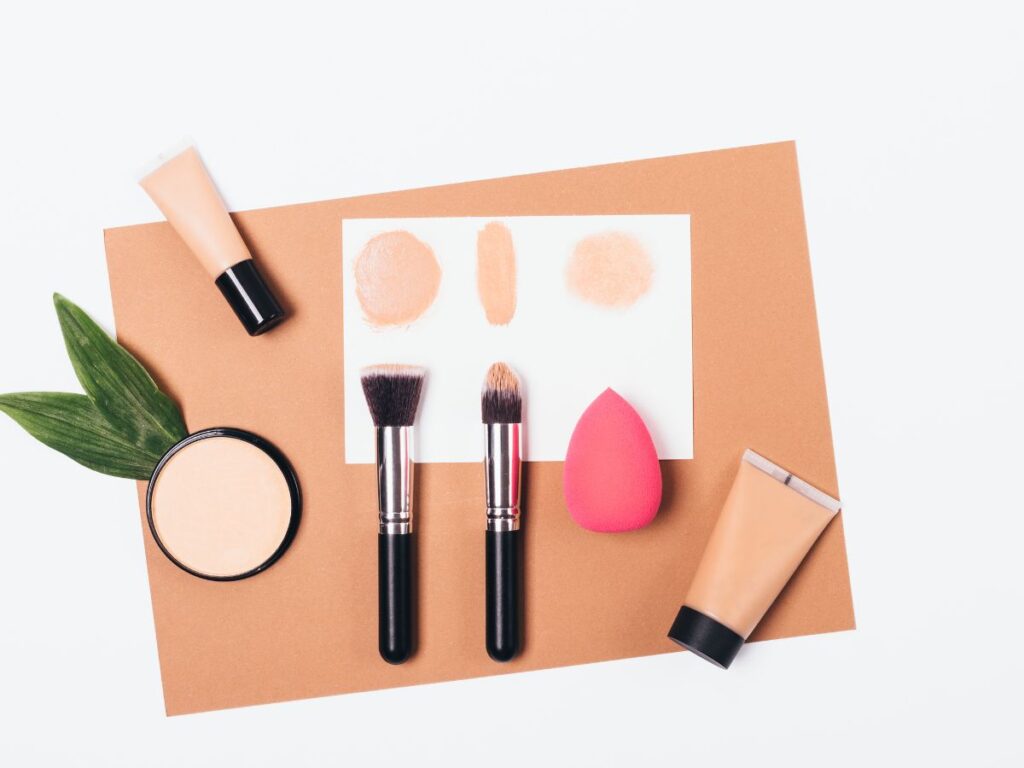
Step #7: Check Compliance and Regulatory Support
This step isn’t the most exciting but it’s one of the most important.
When I launched my first product, I didn’t ask for all the right documents. Everything looked fine until my shipment got stuck at customs. I had to delay my launch by three weeks. That’s a mistake I don’t want you to repeat.
If you plan to sell in stores, online, or internationally, you need to make sure your products are legally safe and approved.
Must-Have Certifications
Start by checking what certifications the manufacturer holds. These show they follow good production practices and meet safety standards.
Look for:
- GMP: Good Manufacturing Practice. It confirms the factory follows safe, clean, and consistent production steps.
- ISO 22716: International standard for cosmetic production.
- FDA-Registered: Required for brands selling in the U.S. (especially for imported cosmetics).
- CPNP: Cosmetic Product Notification Portal. Needed for selling in the EU.
You should also ask if they do:
- Microbial Testing: Checks for bacteria or mold in the product.
- Safety Assessments: Proves the formula is safe for skin use.
These aren’t just extras. Some countries require them to approve your product for sale.
Regulatory Documents They Should Provide
Make sure the manufacturer can give you these basic documents:
- INCI list: This is the full ingredient list using standard cosmetic names.
- COA (Certificate of Analysis): Confirms the product meets quality specs.
- MSDS (Material Safety Data Sheet): Lists possible hazards and how to store the product.
- Product Claims Validation: Proof that your claims like “long wear” or “fragrance-free” are backed by real tests.
Ask for these early. If the manufacturer delays or avoids the topic, that’s a red flag.
Missing documents can cause serious issues especially if you’re a salon or startup just learning the cosmetic rules. You could face customs delays, legal trouble, or product recalls.
Play it safe. Make sure your manufacturer is ready to support you with everything you need. That way, you can focus on building your brand not fixing paperwork problems.
Step #8: Compare Multiple Manufacturers Side-by-Side
You’ve done a lot of work already research, calls, testing. Now it’s time to make your final decision. When I reached this stage, I still felt torn between 2 great options. One had better prices. The other offered more support. To make it clear, I laid everything out in a table.
That’s what I recommend for you too.
Create a Comparison Table Based On:
Set up a simple chart. You can use a notebook, spreadsheet, or even a whiteboard. Line up each manufacturer across the top, and list your key decision points on the side.
Here’s a sample layout to get you started:
| Criteria | Manufacturer A | Manufacturer B | Manufacturer C |
| Product Quality | Very good | Average | Excellent |
| MOQ (Min Order Qty) | 500 units | 1,000 units | 300 units |
| Pricing (Per Unit) | $2.50 | $2.10 | $2.80 |
| Turnaround Time | 8 weeks | 10 weeks | 6 weeks |
| Communication | Fast + helpful | Slow replies | Friendly + clear |
| Regulatory Support | Full documents | Limited help | Full documents |
| Packaging Options | Basic only | Custom available | Custom + eco |
You can change the rows based on what matters most to your brand.
Think long-term here. Ask yourself:
- Will this partner grow with me as my business expands?
- Do they care about my product or just my money?
One manufacturer I almost chose looked perfect on paper. But they were hard to reach, even during the sample stage. That told me what I needed to know.
Choosing a manufacturer is more than comparing numbers. It’s about finding a partner who supports your goals now and in the future. This table helps you see the full picture, so you can make your choice with confidence.
Step #9: Make Your Final Decision
This is the big moment. You’ve done the research, tested the samples, asked the hard questions, and compared your top choices. Now it’s time to commit to a manufacturer.
I remember feeling both excited and nervous at this point. What if I picked the wrong one? What if things went off track? But once I had a checklist in front of me, everything felt clearer. That’s what helped me move forward with confidence and it can help you too.
Final Checklist Before Committing
Before you say yes, make sure the basics are in place. These steps protect you and make your business relationship clear.
- Signed NDA (Non-Disclosure Agreement): This keeps your ideas and formulas private.
- Manufacturing Agreement: Outlines what both sides are responsible for. This should include quality expectations and delivery terms.
- Clear pricing and Production Timeline: Know exactly what you’re paying for, when payments are due, and how long production will take.
- Ownership of Formulas: If you create a custom product, confirm in writing that you own the formula not the manufacturer.
- Communication Expectations: Decide how you’ll stay in touch. Will you get weekly updates? Who’s your main contact person?
Don’t be afraid to ask for these details. A professional manufacturer will already have them ready.
Once everything checks out, start with a small batch order. Even if you’re confident, it’s smart to test how they handle a real production run before you scale up.
You’ll learn how they work under pressure, how fast they respond, and how the final product turns out.
I’ve seen people order 10,000 units on their first go then regret it when packaging was off or shades were inconsistent. A test run helps you avoid that risk.
Conclusion
You now have a clear roadmap. You know how to plan, search, test, and compare. You’ve come further than most ever do.
Starting is the hardest part. I know it was for me, too. But once you take that first step, everything starts falling into place.
So what are you waiting for? What product do you want to create?
Contact us today. TY Cosmetics can help you find the right manufacturer and bring your idea to life.
Discover More Options
We’ve got more for you! These articles provide more tips and guidance to keep you on track:
- How Much is the Makeup Industry Worth
- Third Party Cosmetic Manufacturing: What You Need to Know
- Top 7 Makeup Manufacturers
- Makeup Buying Guide
Still haven’t found what you’re looking for? Don’t hesitate to contact us. We’re available around the clock to assist you.
